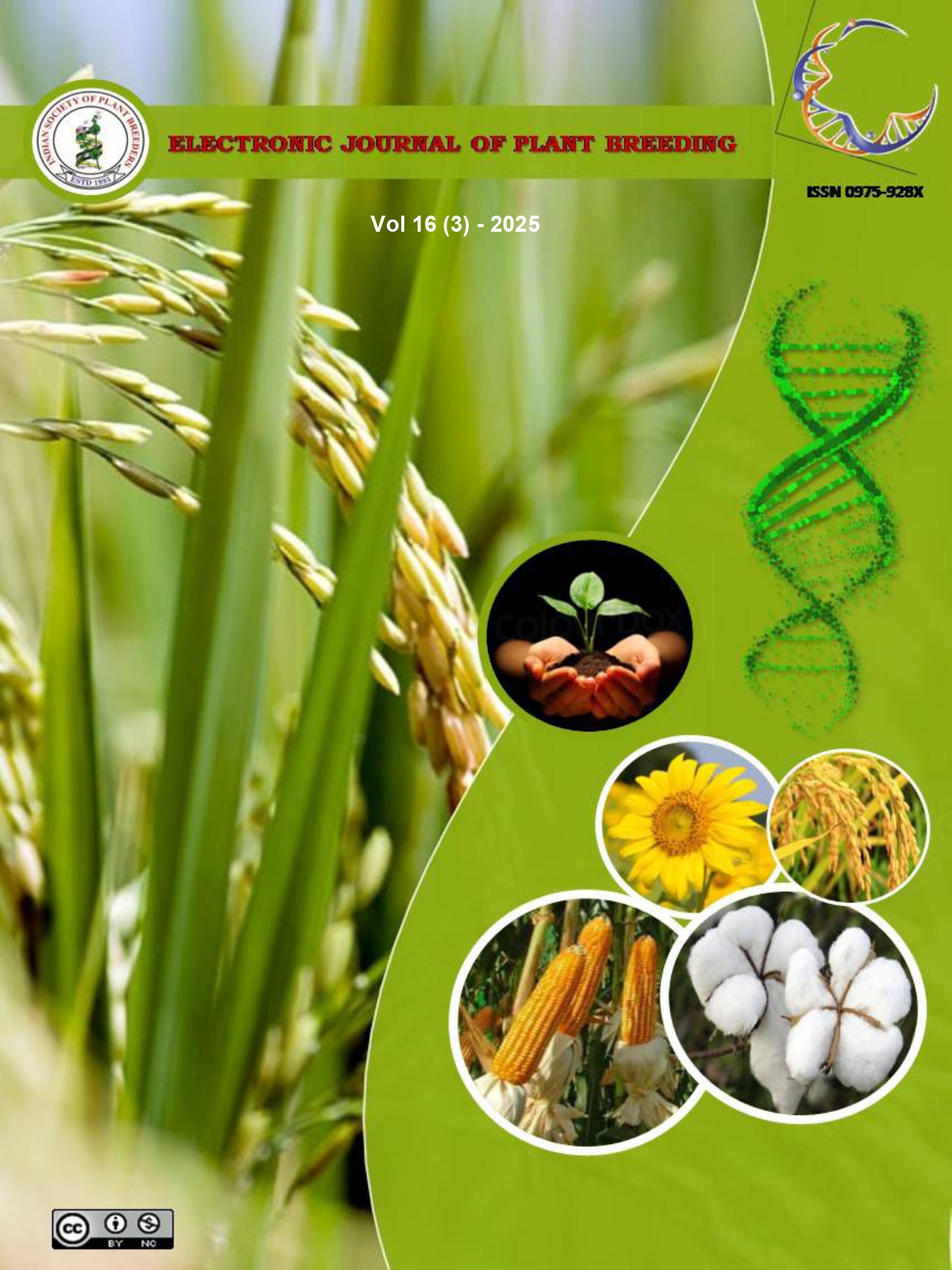Genetic parameters, trait associations for yield traits and red rot resistance in seedling and clonal stages of sugarcane
Abstract
The present study was taken up to evaluate genetic variability for physiological traits, drought tolerance and disease resistance in seedling and clonal stages in sugarcane to identify promising genotypes for yield enhancement and stress resilience. Moderate estimates of GCV and PCV coupled with high heritability and genetic advance over mean (GAM), were recorded for NMC, single cane weight, cane volume, and cane yield, indicating the predominance of additive gene action in inheritance of these traits. Traits like green leaf number, leaf area index (LAI), brix, sucrose, purity, and cane diameter showed low to moderate variability and heritability, indicating non-additive inheritance. Meanwhile, traits such as CCS percent, shoot population (120–240 DAP), NMC at 300 DAP, single cane weight, and cane yield were influenced by both additive and non-additive gene effects, suggesting the need for combined breeding strategies. Drought tolerance assessed based on LAI and SPAD chlorophyll meter readings (SCMR), in first and second clonal stages, led to the identification of 20 drought-tolerant clones. Subsequent red rot screening under artificial inoculation revealed eight elite clones. These stress-resilient and disease-resistant genotypes represent valuable genetic resources for future varietal improvement in sugarcane breeding programs.

